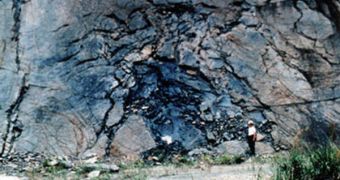According to a group of researchers, it may be that the earliest forms of life on the planet might have been made possible by the influence of thousands of small, nuclear fission reactors blasting everything around them with radiation. The model would account for the reason why a radioactive substance has all but disappeared from the Earth's crust, and also for how a source of oxygen may have been capable of doing all this, ScienceNow reports.
New types of photosynthetic bacteria are generally credited with bringing about the massive amounts of oxygen that flooded the planet's atmosphere around 2.5 to three billion years ago. This oxidation event was crucial for the emergence and development of complicated life, as everything that lives today is heavily reliant on oxygen as a source of energy. Plants and other photosynthetic organisms are different, as they process carbon dioxide and sunlight to obtain oxygen and energy.
Canadian researchers Laurence Coogan, a geologist, and Jay Cullen, a chemical oceanographer (both with the University of Victoria), believe that the mineral known as uraninite was made to vanish by the earliest concentrations of oxygen. In a paper published in the latest issue of the journal GSA Today, they explain that the volcanically produced mineral was most likely absorbed by the oxygen, which was confined to the world's oceans at the time, having to take it to the atmosphere.
The main argument they use to support their idea is the fact that oxygenated water is known to dissolve uraninite, which may explain why the mineral completely vanished from the geological records. Moreover, the team says, as the uraninite broke off into other chemicals, small grains of the radioactive uranium-235 might have been produced. When about a basketball-sized volume of the stuff accumulates, fission reactions may begin, in turn producing neutron radiation.
Coogan and Cullen say that, at the time, enough 235U might have been produced to fuel not one, but millions of these small, natural fission reactors. In the Oklo region of Gabon, Coogan says, the traces of such a reactor have been positively identified. While this is the only confirmed piece of evidence to support their claims, the two believe that many other locations around the globe may have been bombarded by naturally produced neutron radiation. They conclude by saying that there is no way of assessing the exact influence that the phenomenon had on developing lifeforms.

 14 DAY TRIAL //
14 DAY TRIAL //